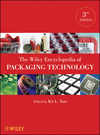FPA Update
FPA Releases 2017 State of the Flexible Packaging Industry Report

The 2017 Report, recently released by the Flexible Packaging Association, provides industry converters, suppliers, investors, and analysts with insight into the performance of the U.S. flexible packaging industry over the past year. This definitive source of data and information also examines several other aspects of the industry including:
- Performance (growth, revenue/volume expectations, profitability, capital spending)
- Materials and processes (printing, expected material usage)
- End-uses (end-use forecast, U.S. Census Bureau retail segments data)
- Structure and consolidation (M&A activity)
- Imports and exports (trade outlook)
- Industry vision, challenges, and critical issues
Over the next few months, the FPA Update will include reviews of key sections within the 2017 Report. Following is an overview of the “Industry Performance” and “Materials & Processes” sections of the Report.
U.S. Flexible Packaging Industry Performance
The U.S. flexible packaging industry is estimated to be about $30.2 billion in annual sales for 2016. It represents 19% of the $164 billion U.S. packaging industry and is the second largest segment behind corrugated paper. (See Figure 1)
According to the Report, growth of the U.S. flexible packaging industry has been steady over the past 10 years with a compound annual growth rate (CAGR) of 1.9 percent and a 2016 annual growth rate of 2.4 percent. FPA estimates that the industry will increase to $31 billion in 2017.
Materials & Processes
Flexible packaging companies utilize a number of materials and processes to produce flexible packaging. Film and sheet, and plastic resins account for 69% of the materials used in the U.S. flexible packaging industry. Inks account for about eight percent; paper, seven percent; foil, four percent; and coatings and adhesives, four percent. (See Figure 2)
The Report details that PE (polyethylene) film is used by 83% of survey respondents, and accounts for 41% of total film use. PE resin is used by 82% of survey respondents and accounts for 79% of total resin use.
FPA gathers the information contained in the Report through several reliable industry sources, including the FPA members’ State of the U.S. Flexible Packaging Industry Survey; the FPA non-members’ Industry-Wide Converter Survey; the Annual Survey of Manufactures (ASM), published by the U.S. Census Bureau; the U.S. Department of Labor; the U.S. Department of Commerce; industry analysts; and investment banking reports. Data collected from these sources provides a more complete picture of the U.S. flexible packaging industry, and helps to crosscheck information regarding industry size, structure, market segments and key packaging products.
For More Information
For more information on the FPA 2017 State of the Flexible Packaging Industry Report, contact FPA’s Business & Economic Research Division at fpa@flexpack.org or 410-694-0800, or visit www.flexpack.org.
Looking for a reprint of this article?
From high-res PDFs to custom plaques, order your copy today!







